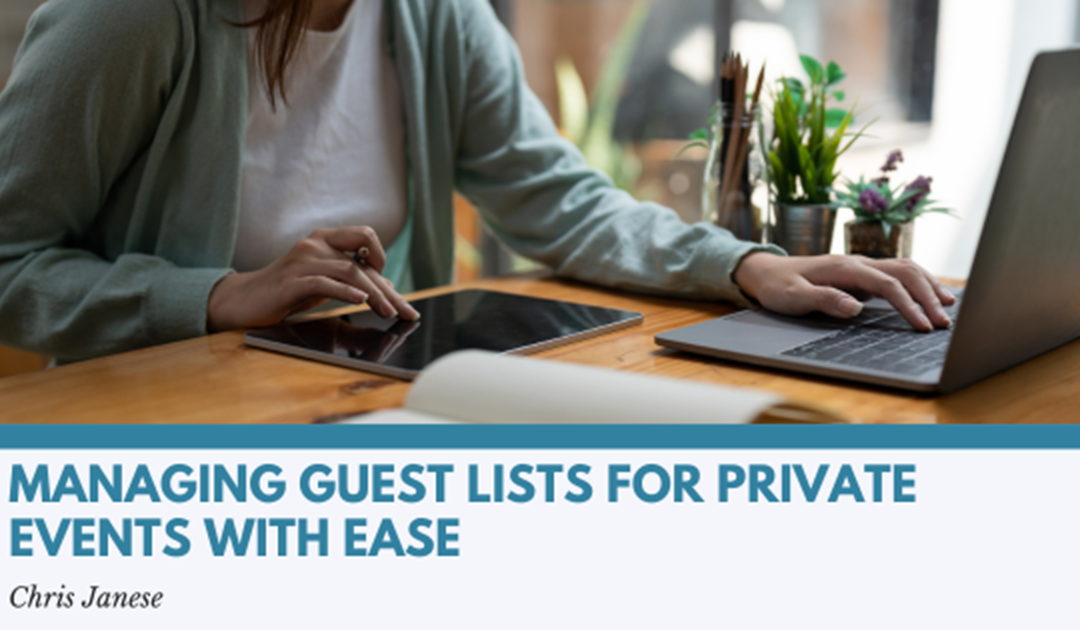One of the most critical yet often overlooked aspects of planning a private event is managing the guest list. Whether it’s an intimate dinner party, a milestone birthday celebration, or a backyard wedding, the people you invite and how you manage their participation can determine the success of the event. A well-organized guest list helps you stay within budget, choose the right venue, and create a welcoming atmosphere for everyone involved.
Start by clearly defining the purpose and scale of the event. This helps guide how many people to invite and what kind of venue or resources you’ll need. For example, a cozy housewarming may call for 20 close friends, while a milestone birthday could involve over 100 people. Once you know the type of event, create an initial “dream list” of everyone you’d love to invite, then narrow it down based on space and budget constraints.
Segment your guest list by category—family, friends, coworkers, neighbors—so you can manage expectations and balance groups. This step also helps if you need to cut back. Understanding who falls into which group makes it easier to prioritize and adjust if necessary.
Next, use a digital tool or spreadsheet to keep track of names, addresses, RSVPs, and special notes such as food preferences or seating needs. Many online platforms now offer integrated guest list features with RSVP tracking, meal selections, and real-time updates. These tools can prevent last-minute surprises and make planning more efficient.
Send out invitations with plenty of lead time, especially if the event requires travel or falls during busy seasons. Be clear about the event’s purpose, dress code, start and end times, and RSVP deadline. If you’re sending digital invitations, include a follow-up reminder a week before the RSVP date.
Handling RSVPs efficiently is crucial. Once replies start coming in, update your list regularly. Follow up with non-responders a few days after the deadline. This ensures you have a solid headcount for catering, seating, and party favors.
Communication is key throughout the process. For smaller private gatherings, a personal phone call or text message can make guests feel valued and help you gauge interest. For larger events, batch emails with individual names feel more personal than generic messages. Clear and courteous communication also makes it easier to manage plus-ones and unexpected questions.
Be prepared for last-minute changes. Guests may cancel, arrive with unconfirmed plus-ones, or show up late. Build flexibility into your seating chart and food arrangements. Having a few extra chairs or place settings ensures you’re not caught off guard.
Consider using a seating chart if the event includes a meal or formal program. Strategic seating can enhance the experience by placing people with similar interests together. Use name cards to help guests find their spots easily, and include small conversation starters on the table to break the ice.
After the event, take the time to thank your guests for attending. A thank-you message or email shows appreciation and leaves a positive lasting impression. If you’re planning more events in the future, these gestures strengthen relationships and make future invitations more welcome.
Managing a guest list may seem like a simple task, but it requires careful attention to detail and ongoing communication. From the first invitation to the final farewell, every interaction should reflect the thought and care behind your event. With proper organization and a guest-first mindset, you can create an experience that feels effortless for attendees and stress-free for yourself.
